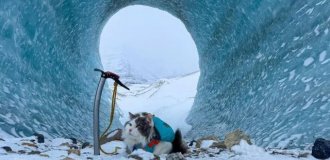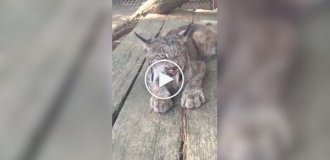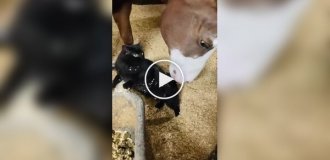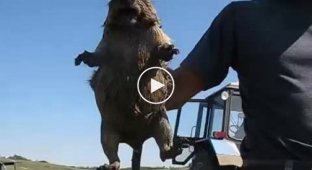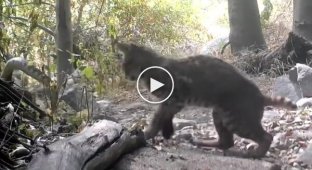Meet the California ground squirrel. This little animal hunts other rodents and is a master at deceiving snakes. 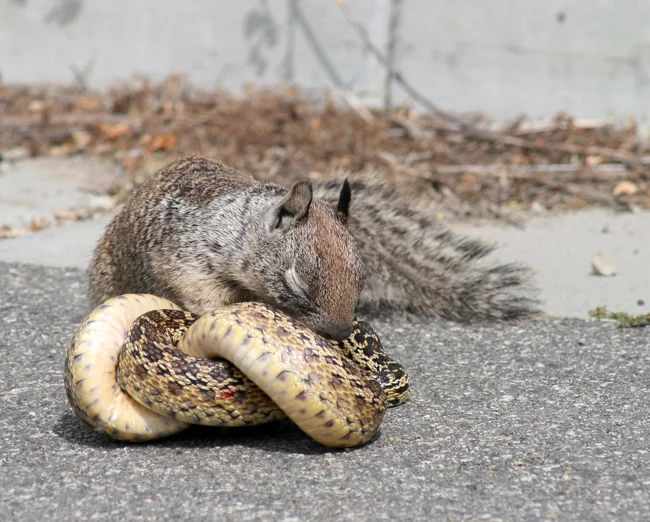
Now I'm going to poke a couple of holes in this hose!
In the wild, everything is usually predictable: the predator attacks, the prey escapes. But the California ground squirrel has turned the tables. It laughs in the face of death and attacks its main enemy—the rattlesnake! Idiocy and courage? No, it's a tactic that works. The hunt turns into a theater of the absurd: North America's most dangerous reptile shyly retreats away from a rat-sized rodent! How can this happen? 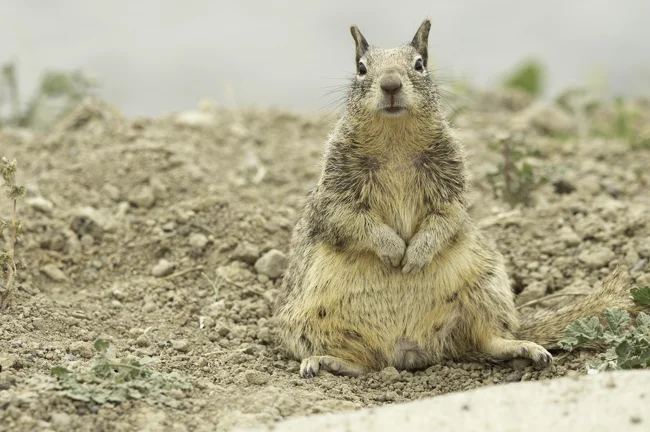
Do you know the Pacific Ocean? I've reassured you.
In appearance, the Rambo gopher is little different from any ordinary squirrel from the park. A fluffy tail, beady eyes, and perched ears. Perhaps our hero is a bit more substantial: an adult weighs up to 700 grams. But don't be fooled by its outward charm. This sweet little creature is a child of the harsh wastelands, hardened by the scorching prairie winds. 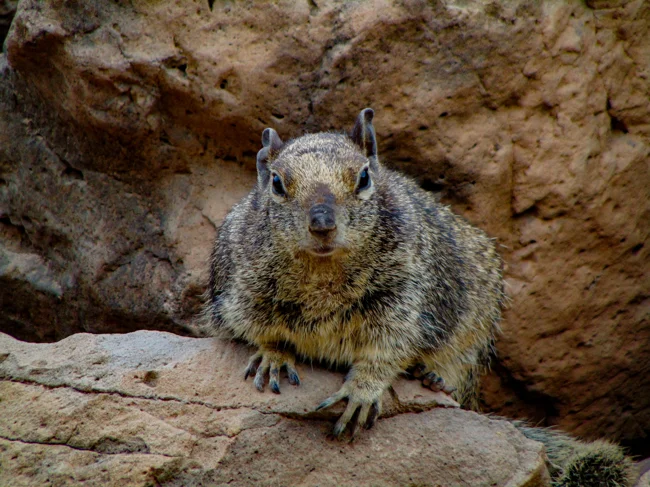
You reek of weakness.
The home of the California ground squirrel is the land of the former Wild West. Unbridled, passionate, dangerous. Long before humans arrived, the struggle for life here was unconventional. Even harmless rodents had to take drastic measures to survive. 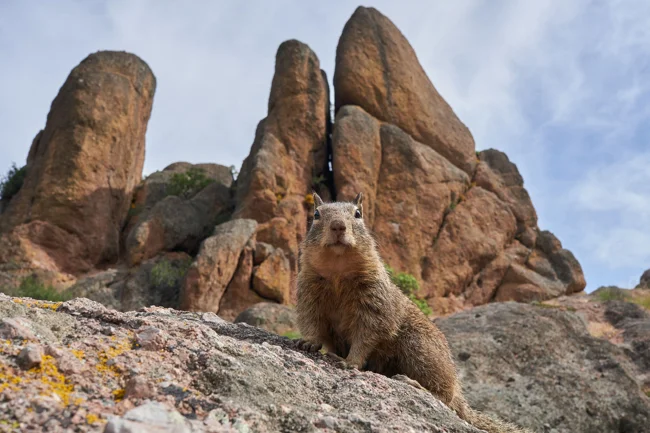
Welcome to the Wild West. I'm sure you won't like it here!
Instead of a cozy burrow, there's a cramped communal apartment. Finding fertile soil in the wasteland is a stroke of luck. Therefore, several generations of gophers settle on a fortunate patch of land. Thus, a mini-town is formed, a Khrushchev-era apartment in the middle of the prairie. They live there in cramped quarters, and they're resentful. Everyone has their own entrance and exit. God forbid a neighbor sticks his nose into something that's not his business or on the wrong property! The rodents squabble over scraps of private property. 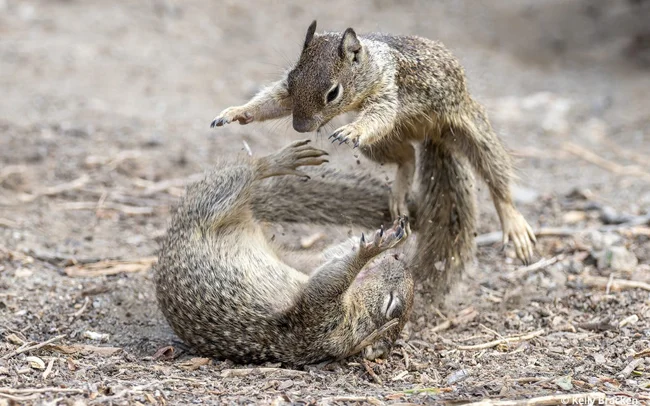
One more word and I'll draw my gun, Charlie!
Ground squirrels are much more tolerant of non-relatives. More than 150 native species use their burrow system in one way or another! But don't think this is selfless kindness. It's quite possible it's a cunning strategy for... hunting? The California ground squirrel's diet consists primarily of prairie grasses. Tubers, grains, and even bark. The animal fills not only its belly but also its cheek pouches to capacity, after which it carries all its spoils back to its burrow. At least, that's how things go for most of the year. 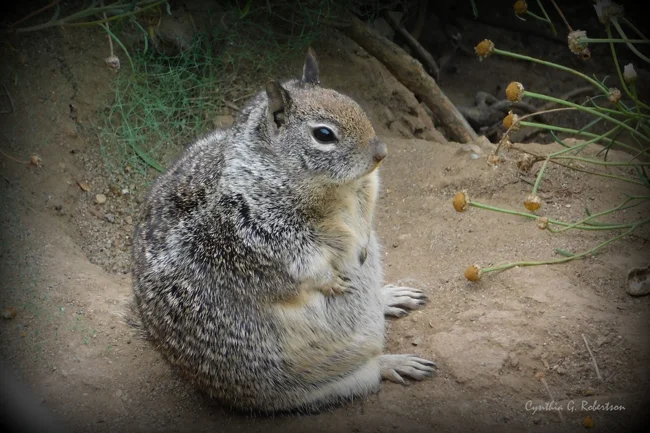
Damn it, Bob, I've turned into a bison! Mary makes too delicious pancakes!
In summer, the California ground squirrel reaps a bloody harvest. It's one of the few rodent species that specifically hunts other rodents. Even scientists were shocked! Local voles have been targeted. In midsummer, their population peaks. At the same time, the ground squirrels reveal their bloodthirsty nature. They not only hunt, but also steal the prey from each other! Cruel? Possibly. But each exit from the burrow can be the last for the California ground squirrel. He sets out to hunt in the middle of the day. For other rodents, leaving their shelter at midday is tantamount to suicide. There are too many predators: eagles, kites, falcons, coyotes. A couple of seconds is enough to escape them. The gopher isn't exactly a sprinter, but he doesn't need to run far—he never ventures more than 50 meters from his shelter. Afraid? Straight into the house! 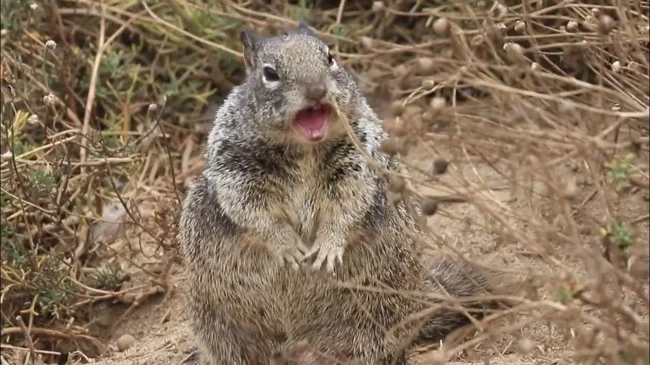
When Mom comes home from work and you forgot to take the chicken out of the freezer.
But the gopher's main enemy holds the entire Wild West in a grip of fear. The rattlesnake is the most dangerous reptile in North and Central America. It accounts for 30-40% of all venomous snakebites in the United States. But while people get a fit from every rustle in the bushes, the gopher makes sure the rattlesnake shies away from it! 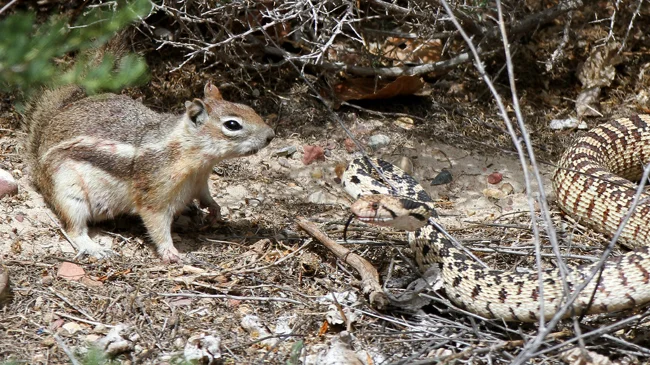
Rattle me some more! I'll bite your rattle off!
Our hero has built three layers of defense. The first flows in the blood. Scientists collected serum from different populations of California gophers and compared their resistance to the venom. The rattlesnake toxin is hemotoxic—meaning it destroys tissue and disrupts blood clotting. So, the blood of rodents that live alongside rattlesnakes neutralizes the venom 3.3–5.3 times more effectively than the blood of gophers, which are almost never found among the reptiles! 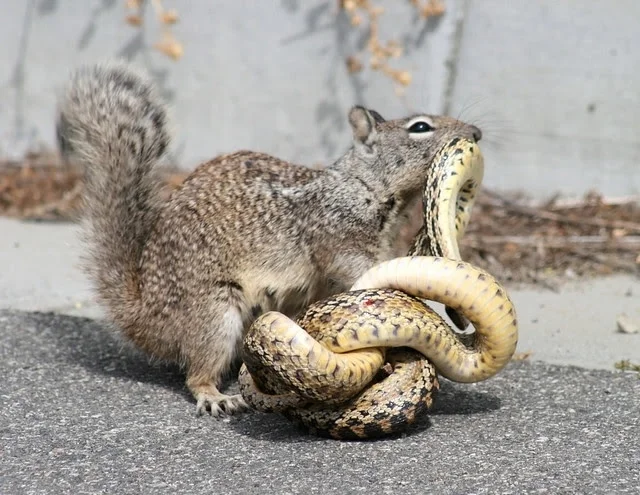
Ground squirrels can tell by sight and smell whether a snake is venomous or not. Depending on this, the animal develops a strategy. The rodent is more cautious around venomous snakes, but may even hunt nonvenomous ones! 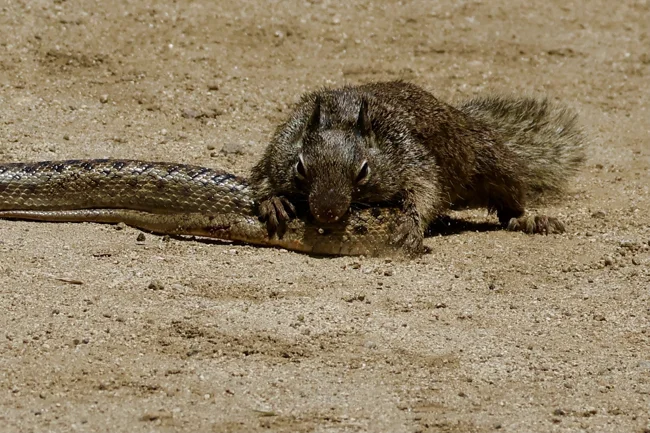
Although even venomous snakes get their fair share of trouble from ground squirrels.
The second line of defense is a wolf in sheep's clothing. More precisely, a ground squirrel in snakeskin. Reptiles regularly shed their skins. For snakes, it's trash. But for rodents, it's a real treasure. Having found old, dry scraps of skin, the animal will greedily swallow everything it finds. But it won't eat it. It will chew it, mix it with saliva, turn it into a paste, and thoroughly rub itself with the resulting substance, like shower gel! Why? To mask its own odor. Particularly caring mothers will smear the liquid not only on themselves but also on their young. 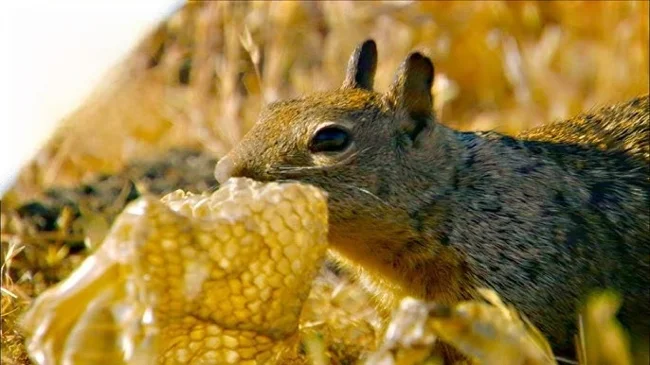
Snatched some shampoo on sale.
The third level of defense is attack. Upon spotting a snake, a gopher doesn't run away from it, but attacks the reptile, tail raised like a pistol. The latter is more than just a clarification. The rodent's tail plays a key role. It's what rattlesnakes fear so much! 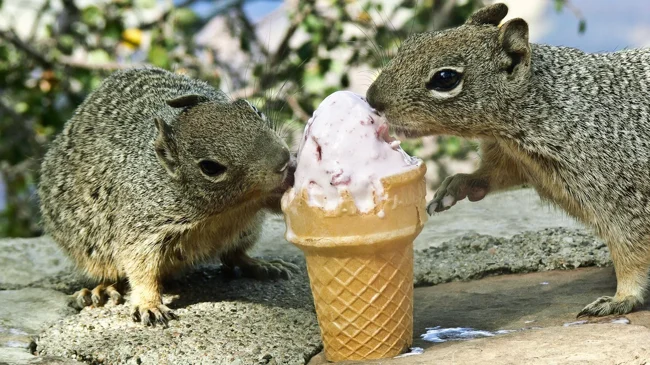
Gophers aren't afraid of humans either. They happily accept treats from our hands.
In addition to their eyes, nose, and hearing, most snakes use a built-in thermal imager to detect prey. Special pits detect the heat emitted by the victim. This is very convenient when you're legless and your entire view is blocked by grass. But California gophers have learned to use this snake-like feature to their advantage.
Upon detecting a rattlesnake, the rodents raise their tails and wave them vigorously. This is the warm-up phase—the tail's temperature rises to 28-31 degrees Celsius. From this point on, the snake no longer sees a gopher. The thermal imager transmits an image of a large, fast animal, and attacking it would be a bad idea! The gopher will persistently wag its tail and stand facing the snake until it retreats farther from the burrow. Sometimes the confrontation lasts a couple of minutes, but sometimes the animals stand facing each other for an hour! The snake can call the bluff at any moment. The gopher must be ready to evade the attack at any moment. The tension is at its peak—like a good cowboy shootout! 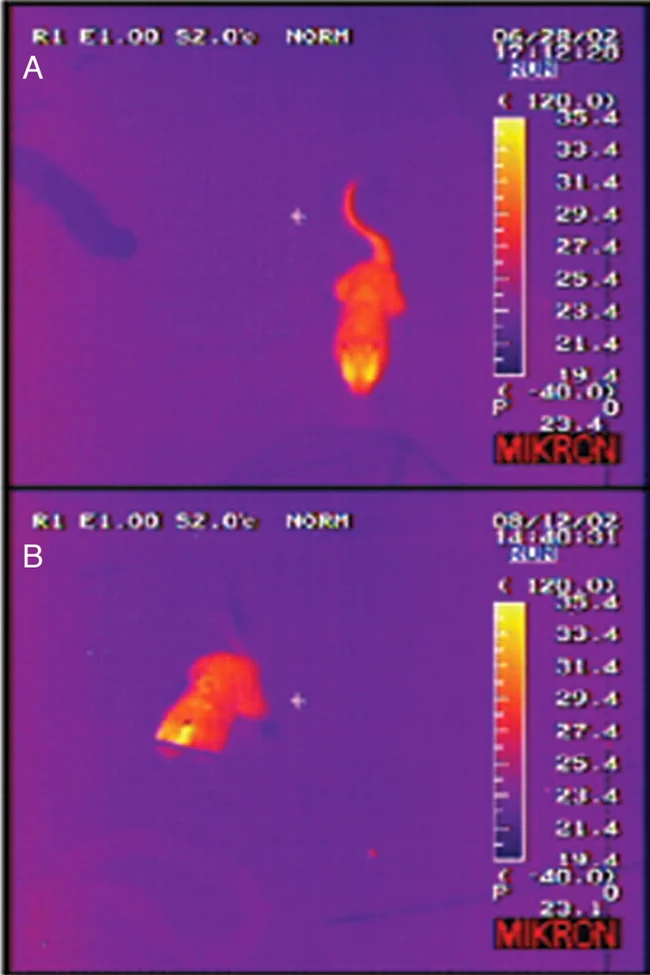
Scientists speculate that the snake's tail may cause it to confuse the gopher with another snake preparing to attack.
Biologists note that the gopher almost always emerges victorious from a duel. The snake attacked adult rodents only 9.5% of the time. But the ability to masterfully deceive an enemy comes with experience. Rattlesnakes attack young gophers three times more often—the number of attacks increases to 27%! But if a young gopher has mastered the art of dissimulation, it will live to be 6 years old! A respectable age for a rodent. 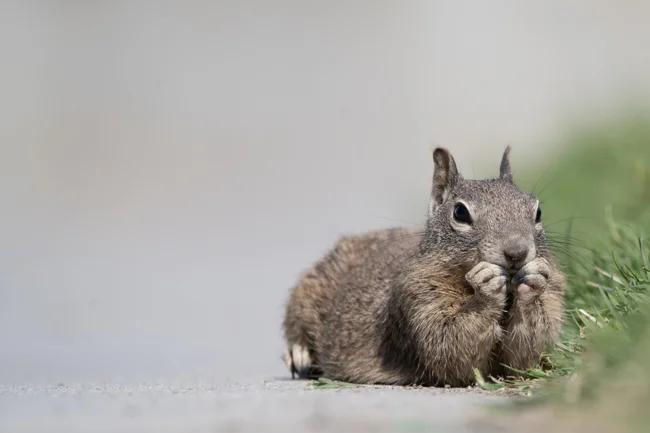
California gophers don't need a movie theater. Their every day is filled with action, like a thrilling action movie!
With cunning, ingenuity, and courage, the California gopher has turned the rules of the game upside down. The continent's most fearsome reptile hides from him in terror! Here he is—the true heir to the traditions of the Wild West!
Add your comment
You might be interested in:
